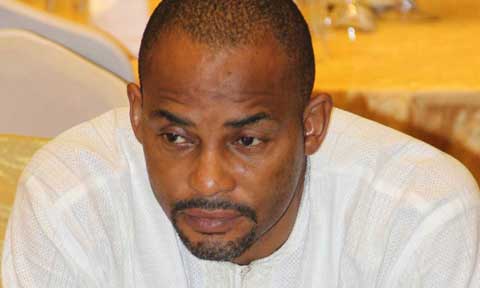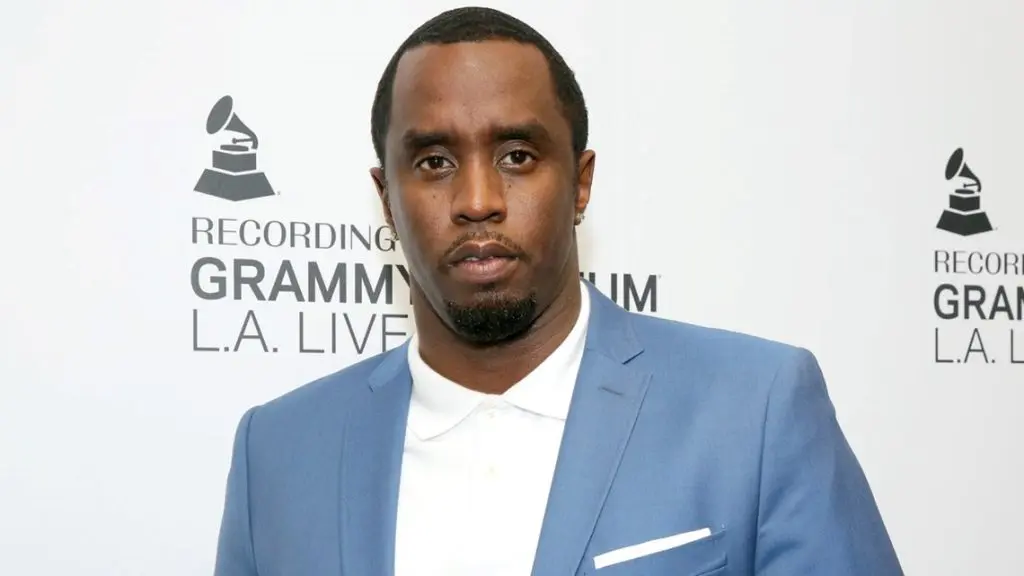On Tuesday, an ABC News/Washington Post tracking poll showed Donald Trump leading Hillary Clinton by a single percentage point, and the news went around the Internet like a virulent flu bug.
When my wife saw it, she asked, “How can Hillary Clinton be losing to a mentally unstable megalomaniac and sexual predator who doesn’t pay income taxes?”
I pointed out that this was just one poll, and that Clinton’s lead appeared to be holding up in the key battleground states. But the question demands a deeper answer. To many Democrats, the prospect of Trump moving into the Oval Office is literally unthinkable. But on Wednesday, less than a week before Election Day, he was less than two points behind Clinton, according to the Real Clear Politics poll average. How can this be?
In the past few days, Clinton supporters have offered up at least three explanations, or culprits, for why the race is so close: James Comey; “false equivalence” in the media; and sexism. In each case, they are onto something. But the bigger story is one my colleague George Packer wrote tellingly about last week in the magazine: an America bitterly divided along class, racial, and cultural lines. To quote Benjamin Disraeli, the nineteenth-century British statesman, we now have “two nations between whom there is no intercourse and no sympathy; who are as ignorant of each other’s habits, thoughts, and feelings, as if they were dwellers in different zones, or inhabitants of different planets.”
Disraeli was writing about the rapidly industrializing England of the eighteen-forties, and the two nations he referred to were the rich and the poor. In the United States, because of its history of slavery, the Civil War, and mass immigration, the divisions have never been that simple: vertical cleavages along racial, ethnic, and regional lines have often trumped the horizontal class divide. But the gulf between Clinton’s America and Trump’s America, even though it can’t be traced entirely along economic lines, is now a yawning chasm.
The polls say that just less than forty per cent of voters in America have a favorable opinion of Trump. Whatever their views of him as an individual, they like what he stands for: nationalism, nativism, and hostility toward what they consider a self-serving élite that looks down on them. In addition to these confirmed Trump supporters, there are a number of other folks—moderate Republicans and Republican-leaning independents, mainly—who may harbor serious reservations about Trump personally, but who may also be willing to vote for him to keep Clinton out of the White House.
When members of this latter group have been confronted with the most grotesque aspect of Trump’s behavior—such as his willingness to attack the family of a U.S. serviceman who died in Iraq, or his history of treating women like chattel—they have tended to back away from him, causing his poll numbers to falter. But whenever Clinton takes center stage in the news, and Trump fades into the background for a bit, her numbers also tend to fall. Thus the “sine wave” pattern we’ve seen in the polls over the past few months.
The manner in which Comey, the F.B.I. director, revealed last week that his agency was seeking to review additional e-mails in connection with the Clinton e-mail-server investigation was unforgivable. He provided no warning, background briefings to the press, or additional information about the content of the e-mails in question. And his actions have undoubtedly had an effect on the Presidential race. It should be noted, though, that Trump was narrowing the gap in the polls before Friday’s news. And to the extent that Comey’s intervention gave Trump an additional lift, it was largely because the e-mail-server story has already done so much damage to Clinton’s reputation. Merely bringing it up again was probably enough to cost her a couple of points in the polls.
Some of Clinton’s defenders blame the media for this. News outlets, they say, treat her minor transgressions, or alleged transgressions, in the same way they treat outright demagoguery, mendacity, and grotesquery on Trump’s part. This is another argument that needs some context. To the best of my knowledge, nobody has accused Clinton of operating a fraudulent business that bilked tens of thousands of dollars from people on modest incomes, stiffing tradespeople on a routine basis, making a mockery of the tax laws and not paying a cent of income tax for twenty years, boasting about charitable giving while not donating any of her own cash, or sexually assaulting women. Who brought these stories to the public’s attention? The news media. During the Republican primaries, some outlets, particularly on television, indulged Trump shamefully, while using him as a ratings booster. Ever since he got the nomination, though, much of the print media’s coverage, and even some of broadcast media’s, has been negative.
In the past few weeks, hardly a day has gone by without at least one major publication breaking a damaging Trump story. In the past few days alone, the Washington Post has provided yet more details on the sham that is Trump’s charitable foundation; the Times has documented how he claimed an extremely questionable deduction to reduce his taxes by tens or hundreds of millions of dollars; and Slate has published a story claiming that one of the Trump Organization’s computer servers was communicating on a regular basis with a Russian bank. The Slate report has been questioned; the other two stories were as copper-bottomed as the hull of the Cutty Sark.
From Trump University to Trump’s tax records to the parade of women alleging that he harassed and assaulted them, reporters have done a pretty thorough job of illuminating and investigating Trump’s checkered past, the hollowness of many of his claims, and what sort of person he is. Meanwhile, the pundits, including many conservatives, have portrayed Trump as an existential danger to the Republic. And yet none of these journalistic endeavors has had the desired effect: to snuff out Trump’s candidacy.
Some of the blame here may belong to the Clinton campaign. While it has done an effective job of highlighting Trump’s race-baiting and sexism, it hasn’t done enough to exploit his other vulnerabilities, to paint the Republican candidate as a con man whose schemes have victimized many ordinary, hard-working Americans. To be sure, the Clinton campaign has gone some way in this direction. But they should be ramming home every day the message that Trump is a serial chiseler of the little guy, not his savior. Why isn’t Clinton regularly appearing alongside some of the people who lost their savings to Trump University? Where are the ads featuring tradesmen and suppliers and charities that Trump has stiffed?
But the explanation of Trump’s enduring appeal must go beyond political tactics. In a divided but social-media-saturated America, people on either side of the divide communicate over each other, rather than with each other. They regard news stories not as new information to be ingested and considered but as potential ammo to hurl at the other side. They see their political opponents not as well-meaning if misguided fellow-citizens but, to borrow a phrase, as deplorables who have no political legitimacy.
On the Trump side, there is a siege mentality, evident in the constant vilification of the Clintons, the chants of “Lock her up,” and the fury toward the mainstream news media. If you tune in to conservative talk radio, as many Trump supporters do, you will hear a constant discourse of resentment, conspiracy theories, and alienation from the institutions of economic and political power—including the Republican Party establishment. Sean Hannity, of Fox News, for example, daily presents the vote on November 8th not merely as a chance to select a new President but as a last chance to save the country from politicians and liberals who are out to destroy its very essence.
The Trump movement, like the Tea Party movement it supplanted, is a reaction to the socially liberal, polyglot America that is rapidly emerging in the twenty-first century. Representing an older, whiter, and more embattled tradition, it is constantly evoking what it sees as a lost Valhalla—a place of plentiful jobs, rising living standards, conservative social values, fewer immigrants, and minorities who knew their place. To a large extent, this lost America is a myth. Since its inception, practically, the United States has been roiled by technological change, large-scale migration, economic conflicts, and ethnic and religious tensions. But it is a powerful myth, which Trump—Mr. Make America Great Again—plays to shamelessly and effectively.
On the Democratic side, the liberal mentality comes out in suggestions that Trump’s supporters, almost by definition, are uncouth, ill-educated bigots. If you adopt this attitude, vigorously opposing Trump isn’t just a political decision; it is a moral duty and a social necessity. To assert your identity as part of the enlightened America, you need to disassociate yourself from the racist hillbillies, rednecks, and suburban dolts supporting Trump.
“Liberals and Democrats are not really part of a party, as much as they are part of a new America that looks and thinks differently and has little interest in looking back, wherever that might be,” Shadi Hamid, a senior fellow at the Brookings Institution, who spends much of his time studying Islamic societies, pointed out in a thought-provoking piece a few months back. “More than a party, it is a lifestyle, a culture and a sensibility, with its own media, institutions, norms and values.” Hamid probably understates the importance of policy differences that divide the two parties, especially now that Trump has proposed things like introducing religious tests for immigrants and reintroducing the use of torture in interrogations of terrorist subjects, as well as promising to appoint Supreme Court Justices in the mold of the late Antonin Scalia. But the larger point, about the gaping cultural divide, stands.
Despite the recent narrowing in the polls, liberal America still has demographics, early-voting patterns, and the Electoral College map on its side. But even if Trump loses next week, the great divide his campaign has brought to the fore won’t go away. Indeed, as Hamid noted, “The risk is that as whites become a smaller majority—and eventually an outright minority—the tendencies toward ethnic politics we’ve witnessed in this election season might very well intensify.” And if, in the coming years, robots and algorithms provide another big shock to the economy, destroying tens of millions more decent-paying jobs, how many former truck drivers and displaced white-collar workers will be receptive listeners to a future Trump?
Right now, six days from the election, there is a more pressing question than that one. It may be worth thinking about, nonetheless.




















